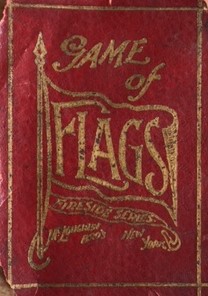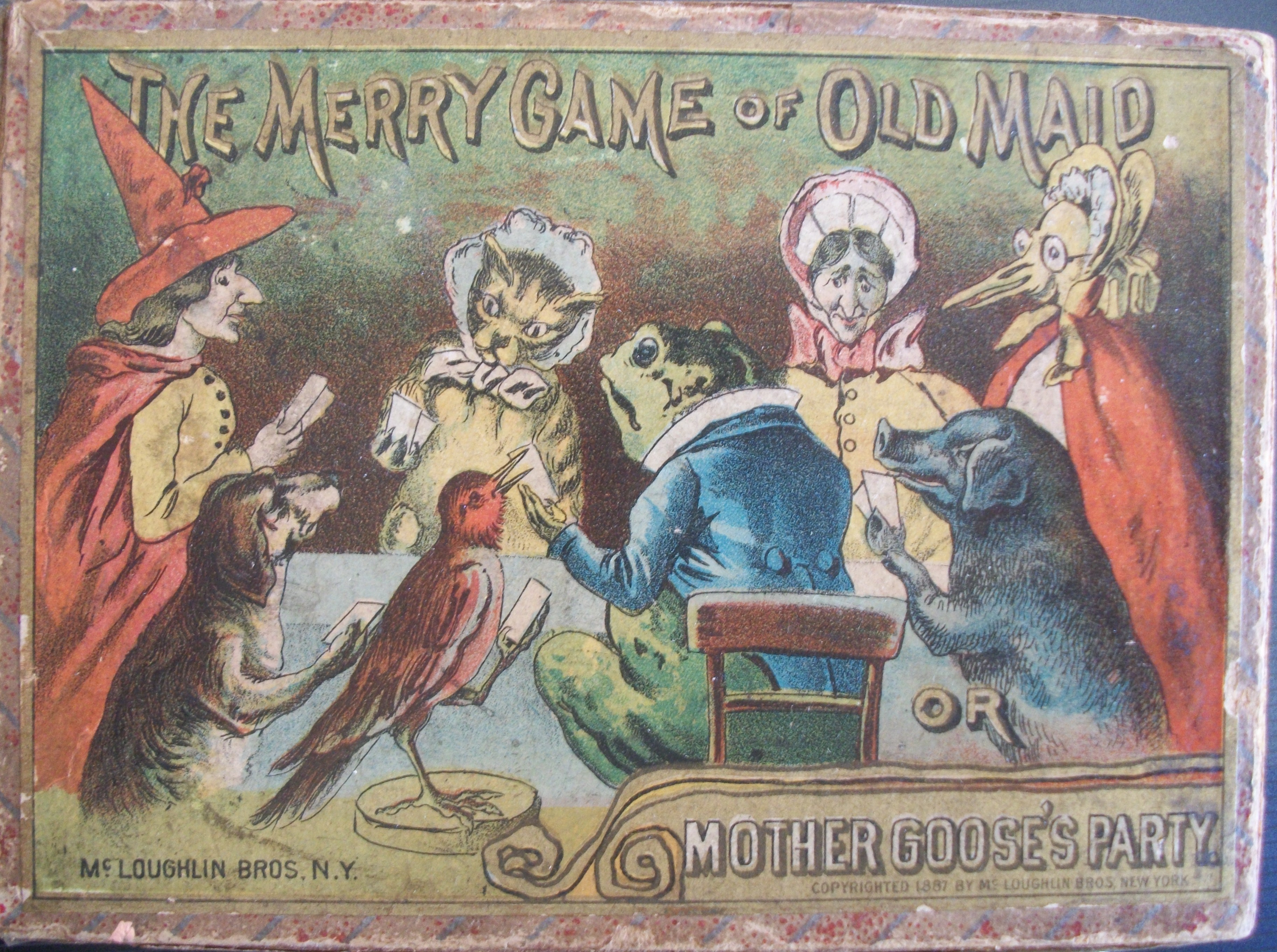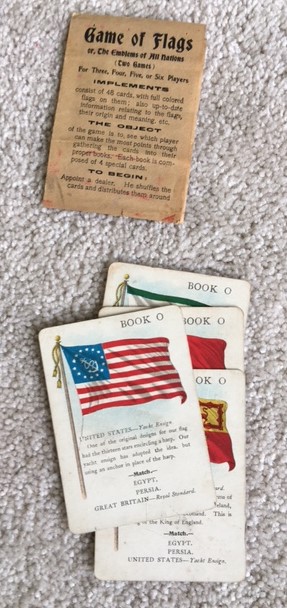
The Game of Flags by McLoughlin Bros. of New York was published in 1902. It consists of 48 cards with full colored flags on them. The cards also include details about the flags shown. It’s a wonderful game to learn about the numerous flags of countries and their origins and meanings.
As many of the games of the 1800’s and early 1900’s, the Game of Flags was created for an educational value and offers simple play. The joy of playing a game came from spending time together and learning about the world.
In this little red box of cards are instructions to play two different games.
The first game is as follows:
The object of the game is to gather the most points by collecting ‘books’ or set of cards/flags through play of the game.
Books for the game are a set of four Flag cards. These are noted on each card. For instance, if a player has the Unites States- Yacht Ensign, he would need the cards of Egypt, Persia, and Great Britain (Royal Standard) to complete Book O.

The Book letter is in the top right corner of a card. The cards needed to match a Book are listed at the bottom of card after the brief history of the Flag.
The United States- Yacht Ensign offers this history of its Flag card:
One of the original designs for our flag had thirteen stars encircling a harp. Our yacht ensign has adopted the idea, but using an anchor in place of the harp.
To begin play all cards are dealt out to players face down. The player to the left of the dealer goes first and attempts to complete a book from his hand by asking any other player of his choosing if he has his card needed. If successful, he may go again. If unsuccessful, it is the next players turn.
Play continues until all cards are exhausted and Books completed by players. The player with the most points wins. Each Book is worth 5 points. However, any Book containing an American Flag counts as an extra 5 points! So it isn’t always the player with the most complete Books who wins.
An interesting twist!
The second game suggested as play is as follows.
One person is appointed the ‘Caller’. From the shuffled deck of flag cards he holds up the top card so all other players can see the card. The first person to name the flag gets it. Each flag card counts as 1 point. The player who has the most points at the end of the game wins!
Simple as that.
Although the game is simple in play, you can see how you would learn about other countries and their flags. At a time when forms of communication were limited or not as quickly widespread, playing games was one of the best ways to discover in a fun and entertaining way.
And still is!
Play a game today!

